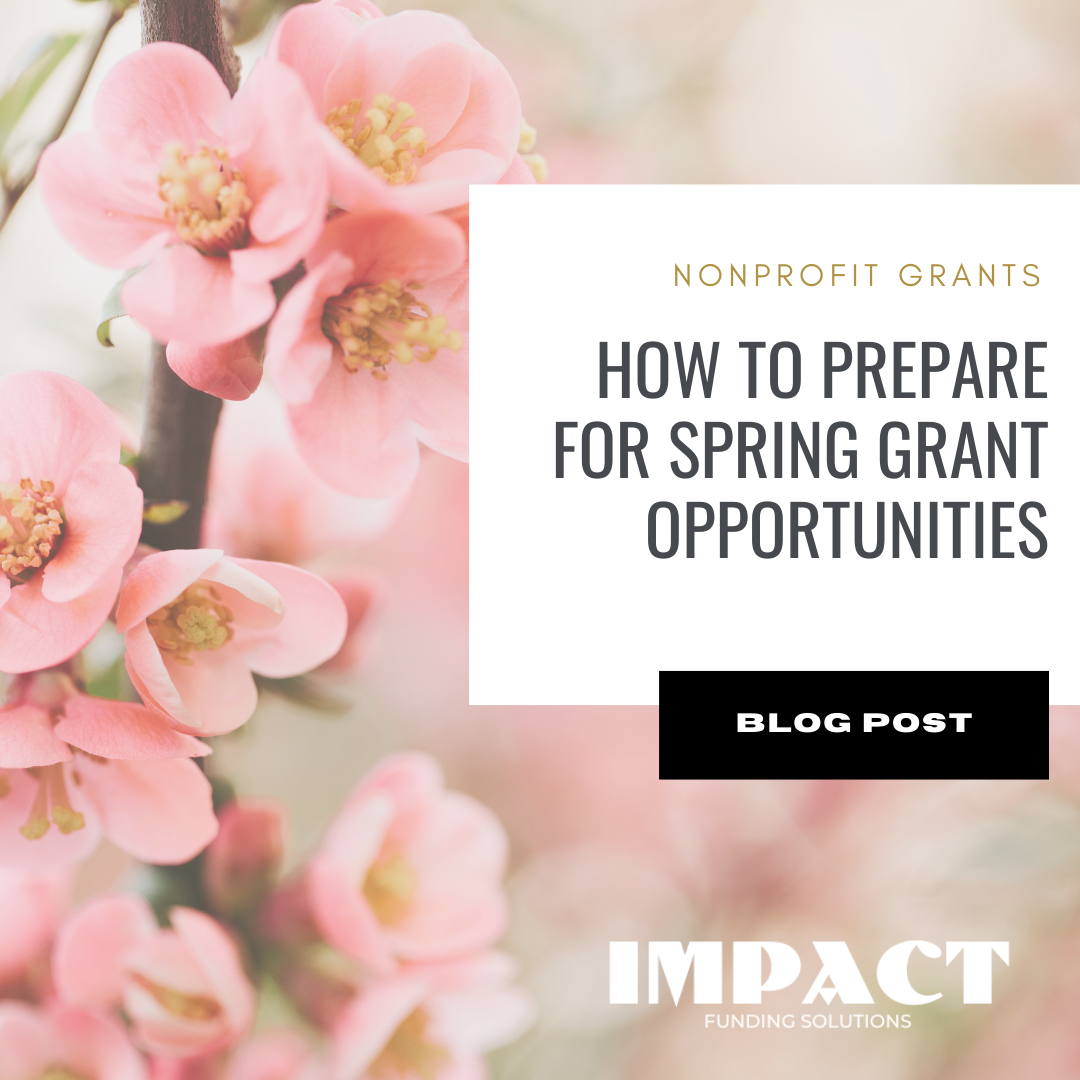How to Prepare for Spring Grant Opportunities

How to Prepare for Spring Grant Opportunities: A Nonprofit’s Checklist
As winter winds down and spring approaches, now is the perfect time for nonprofits to refresh their grant strategy and prepare for the upcoming wave of funding opportunities. Many foundations and corporate grant programs open their applications in the spring, making March, April, and May crucial months for securing new funding. However, with tight deadlines and competition for funds increasing, being proactive and organized is key to success. Here we will provide a step-by-step checklist to help your nonprofit streamline its grant preparation, identify the best opportunities, and submit winning applications this spring.
Why Spring Is a Key Season for Grant Applications
Spring is a peak grant application period for many reasons:
✅ New fiscal year funding: Many funders allocate their budgets at the start of the year and open applications in the spring.
✅ End-of-year evaluations: Funders review their previous grant cycles and look for new grantees to support.
✅ Less holiday competition: Unlike year-end giving campaigns, nonprofits can focus on grants without competing with major fundraising events.
With millions in grant funding available, spring is an ideal time to expand your funding pipeline—but only if you’re ready.
Your Spring Grant Preparation Checklist
✅ 1. Organize Your Grant Calendar
- Identify upcoming grants with deadlines between March and June.
- Prioritize those that align best with your nonprofit’s mission and funding needs.
- Create a timeline for preparing each application, ensuring you have ample time to gather information.
💡 Tip: Use a tool like Google Calendar, Asana, or Trello to track deadlines and tasks.
✅ 2. Update Your Grant Readiness Documents
Most grant applications require similar supporting documents. Having them prepared in advance will save time and reduce stress when applying. Make sure to have:
- IRS 501(c)(3) Determination Letter
- Most recent financial statements or 990 form
- Annual operating budget and program budgets
- List of board members and key staff bios
- Mission statement, organizational history, and impact summary
📌 Pro Tip: Keep these documents stored in a cloud folder so your team can easily access them when needed. We use Google Drive and Trello for this purpose.
✅ 3. Research and Identify New Grant Opportunities
Spring is the perfect time to expand your grant pipeline and seek out new funders.
🔍 Where to Look:
- Foundation directories (e.g., Candid/Foundation Directory Online)
- Corporate giving programs (e.g., Walmart, Target, Kroger, and local businesses)
- Government grant portals (e.g., Grants.gov, state-level grant sites)
- Local community foundations
💡 Action Item: Set up Google Alerts for keywords related to your mission to get notified about new funding opportunities. We pay for subscriptions for GrantWatch and other grant databases, and have a dedicated team member that is continually seeking new grant opportunities for our clients.
✅ 4. Strengthen Your Grant Narrative
A compelling grant application tells a clear and impactful story about your nonprofit’s mission and the communities you serve.
Key Elements of a Strong Grant Narrative:
✔ Problem Statement: What challenge is your nonprofit addressing? Use data and real-life stories to illustrate the need.
✔ Program Description: How does your nonprofit solve this issue? Provide specific details and measurable outcomes.
✔ Budget Justification: Explain exactly how funds will be used and the expected impact.
✔ Sustainability Plan: Show how your organization will continue the work beyond the grant period.
📌 Pro Tip: Customize each grant proposal and response to match the funder’s priorities.
✅ 5. Engage Your Funders & Build Relationships
Many grants aren’t just about the application—they’re about relationships. Before applying, try to connect with the funder through:
- Introductory emails or calls to program officers.
- Attending funder webinars or networking events.
- Following their social media or newsletters to stay updated on funding priorities.
🔑 Building relationships can increase your chances of getting funded and provide insights into what funders are looking for.
✅ 6. Review & Submit Applications Early
Don’t wait until the last minute to finalize and submit your grants.
📝 Final Steps Before Submitting:
- Proofread your application for clarity and completeness.
- Have a second person review to catch any errors.
- Submit ahead of the deadline to avoid last-minute technical issues.
📌 Pro Tip: Some funders accept applications on a rolling basis, so apply as soon as you’re ready!
Final Thoughts: Spring Into Action!
Spring is a season of new opportunities, and with the right preparation, your nonprofit can secure crucial funding to support your mission. By following this checklist, you’ll be ahead of the game and ready to submit strong, competitive grant applications.
💡 Need Help with Grant Strategy & Writing?
At Impact Funding Solutions, we specialize in helping nonprofits research, strategize, and write compelling grant applications that get results. Book a free consultation today to discuss your funding goals for 2025!
🚀 Let’s make this spring your most successful grant season yet! 🌸💰


